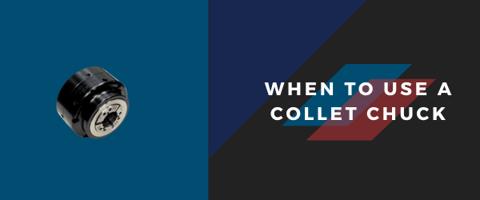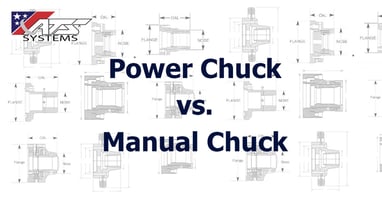The machine-tool industry plays an important role in the manufacturing industry in the United...
Maintaining Your Collet Chucks
Collet chucks are commonly used in CNC machining operations to hold and secure bar stock material. Maintaining collet chucks is crucial for their longevity and machining accuracy. Here are some steps you can take to ensure your collet chucks are in good operating condition.
Regular Inspection:
Perform visual inspections of your collet chucks before and after each use. Look for signs of wear, damage, distortion, cracks, dents, or contamination.
Inspect the condition of the collets that come with the chuck or are meant to be used with it. Check for any signs of wear, damage, or deformation in the collets' gripping surfaces as this can affect their ability to securely hold both workpieces. Worn-out collets reduce the level of accuracy and rigidity, resulting in less precision.
Cleaning and Lubrication:
Clean the collet chuck and collets regularly to remove chips, coolant residue, and debris. Use a soft brush or compressed air to remove loose particles from the collet and chuck body. This will prevent contamination and ensure a proper grip on the bar stock. Also, check that there is no debris in the slots as this could reduce the clamping force. If you find an obstruction in a slot, use a thin object, like a knife’s tip, to remove the obstruction.
Refer to the manufacturer's recommendations for the appropriate lubrication method needed and how often this should be done.
Check Runout and Concentricity:
Use precision measuring instruments, such as dial indicators or runout gauges, to check for runout and concentricity. A good collet chuck should minimize runout, ensuring that the workpiece runs true and accurately. High runout can lead to inaccurate machining. If you notice excessive runout, it may be time to replace worn components.
Clamping Force:
Ensure that the chuck provides adequate clamping force to securely hold the workpiece. Collet chucks typically use a drawbar or similar mechanism to generate clamping force. Check the condition of this mechanism and ensure it functions properly.
Balancing:
In high-speed machining applications, it is crucial to balance the collet chuck to reduce vibrations. Some collet chucks come pre-balanced, while others may require additional balancing measures. Imbalances can lead to increased wear on the collet chuck and reduced tool life. Use a balancing machine to ensure proper balance.
Torque Checks:
Periodically check and calibrate the torque settings on your collet chuck. This ensures that the chuck provides the correct clamping force. Over-tightening or under-tightening can affect performance and safety.
Avoid Over-Tightening:
Avoid excessive force when tightening the collet chuck. Over-tightening can cause damage to the collet or the chuck itself. Use a torque wrench if necessary to achieve the recommended tightening torque.
Calibrate as Needed:
Periodically calibrate your collet chucks to ensure they are holding with the required accuracy. This may involve adjusting or replacing components to maintain tight tolerances.
Store Properly:
When not using your collet chucks store them in a dry, clean place and use protective covers if available to avoid exposure to heat, moisture, or any corrosives.
Training:
Ensure that machine operators are trained in the proper use and maintenance of collet chucks. Encourage them to report any issues or abnormalities they observe during the operation. Mishandling can lead to damage or premature wear.
Replace Damaged Parts:
Components such as nuts, collets, seals, and springs may wear out over time. Replace these components according to the manufacturer's recommended maintenance schedule or when they show signs of wear to maintain the integrity of your collet chuck.
Reach out to your ATS Parts provider for any needed replacement components.
Follow the Manufacturer's Guidelines:
Always follow the manufacturer's maintenance guidelines and recommendations specific to your collet chuck model. They may provide specific instructions for cleaning, lubrication, and maintenance intervals.
Regular maintenance and proper care of your collet chucks are essential for both the longevity of the equipment and the quality of your machining operations. By following these maintenance practices, you can extend the life of your collet chucks and ensure they perform accurately and safely during machining operations. Additionally, always refer to the specific maintenance instructions provided by the manufacturer of your collet chuck for the best results.
.png)



